Driven by Innovation and Fit for the Future
Key industry mechanical engineering: experts discuss trends and challenges
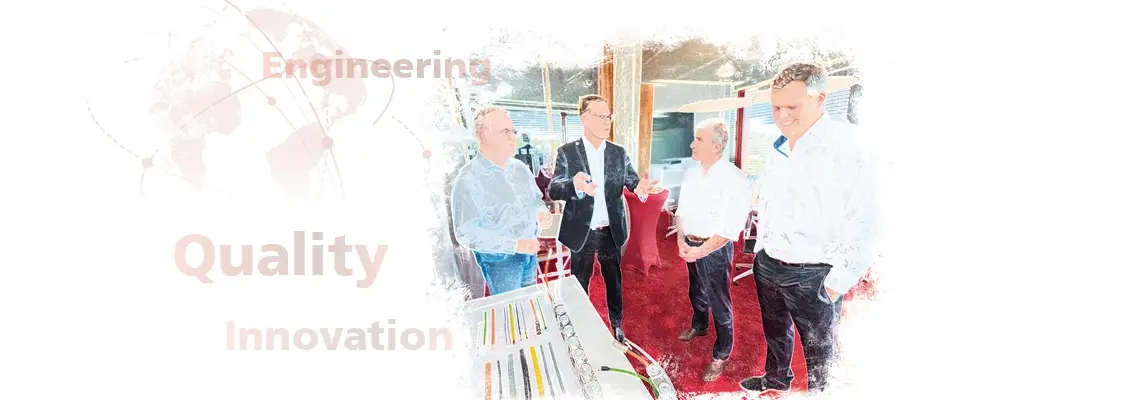
Mechanical engineering is one of the most important pillars of the global economy – and it is currently facing enormous challenges: New technologies, increasing customer expectations, but also economical and politics uncertainties are changing the industry from scratch and are demanding innovative ideas and products. We therefore discussed the trends and developments in mechanical engineering with a panel of experts who also ventured a look into the future of the sector.
Werner von Siemens, Gottlieb Daimler and Robert Bosch: Industry, and particularly mechanical engineering, is a long-living and special tradition in Germany. What do you associate with the sector?
Andreas Muckes: For me, mechanical engineering, particularly here in Germany, has always been inspired by a certain spirit. There have always been things that were claimed to be impossible – and then a Mr Siemens or Daimler or Bosch came along and said “It is possible!” and made it so. In my opinion, it’s this ambition, the creativity to think in new dimensions and the ability to adapt to ever-changing circumstances which are the essential attributes and virtues that have kept mechanical engineering alive and kicking in Germany to the present day – and will do so in the future too, I hope.
Holger Wennrich: It’s also why German machine builders have a very good reputation abroad, particularly with respect to quality. When talking to colleagues and clients abroad, I often hear that machinery is made in Germany according to the “as good as possible” principle, whereas in the rest of the world the “good enough” principle usually applies. This can be a problem, but it can also be seen as an opportunity.
Muckes: There are an amazing number of “hidden champions” in mechanical engineering who are absolutely best-in-class in their specialist area. It’s very seldom though that the public have heard of these companies – after all, when people buy cars, sports shoes or other goods they’re not usually interested in the machines that produced them.
Dr. Sebastian Eisele: By contrast, people buying and using machinery have definitely heard of these companies. For them, of course, quality and reliability are among the most important purchase criteria. But other factors also play a role. For example: how much space does the machine need in my factory? Can it be connected to other machines? Is it easy to operate? These are questions that manufacturers need to think about early on in the development process.
Alongside the traditional creative spirit, it is mainly topics such as productivity, efficiency and flexibility that influence the development of mechanical engineering. What, in your opinion, are the most important drivers of innovation in the sector?
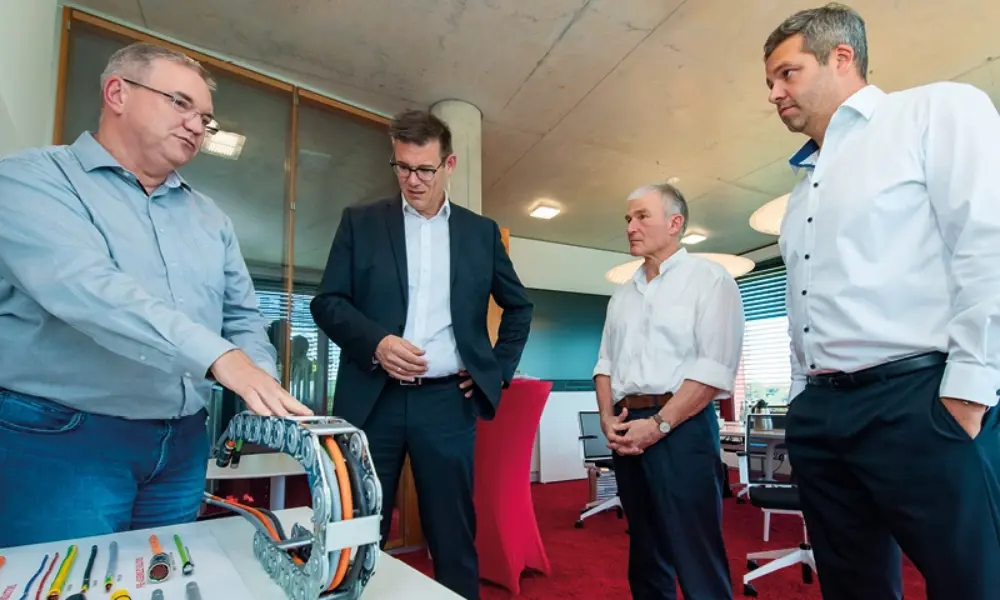
The experts agreed: Flexibility and proximity to the customer are becoming increasingly important in mechanical engineering.
Wennrich: For me, flexibility is the most important trend. The size of production runs is declining in almost every sector. Manufacturers are being forced to produce more cost-effectively with bigger variances. They need the appropriate machinery as well as new manufacturing concepts with features such as networking and digitalisation to do this.
Eisele: This demand for more flexibility is also driven by increasing personalisation – not only for consumer goods but also in mechanical engineering itself. In the past, machine builders developed and sold standard products. These times are now over. Today customers know exactly what they want and are demanding more and more individual modifications – even for machinery. This means suppliers also have to be much more flexible.
Muckes: At the same time though, the quality must be just as high, if not higher. For example, a machine tool must manufacture every part with the same precision – regardless of whether it’s making one or 50,000 parts. That adds another whole layer of complexity to the requirement profile.
Digitalisation and networking are changing mechanical engineering from the bottom up. Which challenges and opportunities do they bring machine builders and their customers?
Thomas Ameis: I see this trend as an opportunity for mechanical engineering to prove its innovative power. If you want to be successful in this sector in future, you have to stand out from the competition as an innovator in areas such as digitalisation, networking and predictive maintenance. This is technically challenging, of course, but it also holds a lot of potential - particularly when it comes to economically viable manufacturing processes with batch sizes as small as 1. New technologies such as additive manufacturing or 3D printing are offering possibilities previously undreamed of.
Eisele: It must be said here though that digitalisation and networking are not exactly core competencies here in Germany. The major innovations are mostly taking place abroad. This is partly due to the high level of data protection we have here – which is undeniably important as it’s certainly advisable to handle sensitive company data carefully. On the other hand, we have to make sure we don’t miss the boat or dillydally around too much. Take AI for example: Instead of looking at the unbelievable potential of this new technology, public discussion is mostly about restricting its possibilities. I don’t think this is necessarily the right approach.
Digitalisation in mechanical engineering also means installing even more sensors, controllers and other electronic components together with the relevant cabling. Which cables are mainly used for this?
Wennrich: They range from motor and servo cables for electric drives to connection and sensor cables and BUS and Ethernet cables for data transmission: generally speaking, the more digitalised and automated a machine is, the greater the variety of cables. An important aspect here is the space available for installing more sensors and electrical components in the machine. As this usually remains the same, solutions that save space are becoming more and more sought-after - that means small outer diameters and bending radii.
Energy chains are often used to securely connect cables and wires to moving machine parts. What needs to be thought about during their construction and use?
Eisele: These days machinery needs to be faster and more dynamic. Increasing travel distances and speeds are putting more stress on the energy chains, something which also needs to be planned for. During this planning though, you face a dilemma between the space available and the number of cables needed. On the one hand, the machine should have lots of functions and extensive electrical fittings, on the other hand it should be as compact as possible.
Ameis: We’ve noticed this too: The number of cables is increasing due to more networking and sensor technology, but the space available for installing the energy chain is the same. It’s becoming more and more difficult to lay the cables in separate chambers in the chain. It’s important here to use the space intelligently by ensuring the cables are optimally arranged. With this internal arrangement, taking into account the installation guidelines, the maximum service life of the cables can be guaranteed.
Muckes: In addition, customers assume that the cables, connectors and chain in energy chain systems are all compatible with one other, which is certainly not always the case. We’re talking here about mechanical and electrical components for a machine which are usually designed by different departments. Often these departments don’t communicate enough with each other and have different requirements, for example, with respect to space. As a system supplier, we are in a position to bring these departments together to solve these challenges. Customer proximity is a must for this though.
Talking about customer proximity: for many machine builders, the focus is increasingly on service concepts. What does good customer relations mean and what does a successful strategy look like in your opinion?
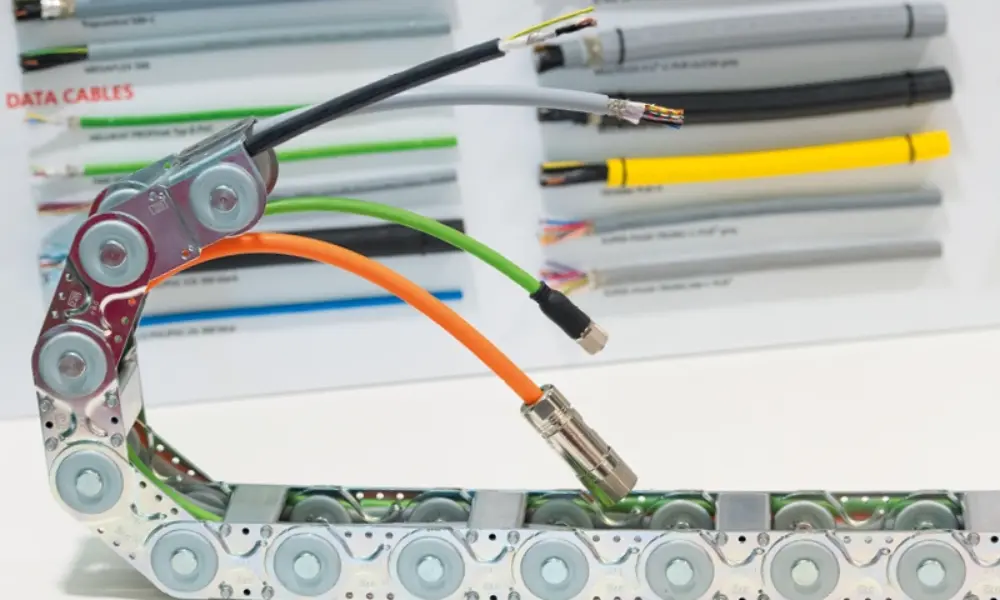
Eisele: One promising approach in mechanical engineering involves turnkey concepts, i.e. the provision of ready-to-use products. Companies in all sectors are complaining about the skills shortage. They don’t have enough qualified staff to commission or even operate their machines. So, anyone able to offer complete ready-to-use production lines which ideally no longer need operating staff but just technicians to service them has a clear-cut advantage. Customers are also prepared to pay extra for this. Machine builders don’t always know in advance though who’s buying their machines and exactly how they’ll be used which makes designing them difficult.
Ameis: That’s true. It’s often difficult to plan for their ambient conditions. What counts here is experience with the machines in everyday use. Geographical differences shouldn’t be underestimated. A machine in Thailand, for example, is subject to completely different temperature and humidity stresses than one in Germany. Hence, it’s a good idea to test them in various conditions beforehand.
Wennrich: Expert technical advice is and will always be extremely valuable. When it comes to cables, for example, it’s true to say that standard products are purchased where the price-performance-ratio is best. However, customers prefer to purchase sophisticated products from reliable partners who know their challenges and application well. Ideally, they’ll buy everything from this partner to simplify the procurement process.
Muckes: The purchasing department is often forced to buy according to the motto “we’ve always done it like this”, either because they’ve been integrated into the procurement process too late or the project is very urgent – and this despite there perhaps being significantly better components available on the market in the meantime. It’s also the supplier’s job to point out optimisation potentials, to actively offer alternative solutions and to clearly explain their added value.
Ameis: If the customer needs a product that perhaps doesn’t exist, one possibility is for the supplier and customer to develop it together until it’s ready for serial production. The creates a long-term and stable relationship with the customer.
Another trend is the move towards more sustainable production methods and renewable energy sources. What obstacles are associated with this and how can machine builders benefit from it in the long term?
Eisele: The move to renewable energy is definitely necessary. However, the current high energy costs are proving to be a real challenge for many manufacturing industries. I think politicians have to create a better general framework to ensure Germany remains a competitive location in the future as well – other countries are making the move more successfully at the moment. A slight unravelling of the complex global supply chains is another approach which offers more sustainability. After all, the Covid pandemic made it drastically clear how little it takes to bring production to a halt. It also had a vast knock-on effect with suppliers whose upstream products were no longer needed. Many of them now find themselves in a precarious situation. And lastly, a question which also needs to be asked is: Is it really necessary to buy a product from the other side of the world rather than from around the corner just because it’s a few cents cheaper?
The turbulences in global supply chains discussed here, but also political crises and inflation mean many machine builders are facing an uncertain future. How can they best deal with these uncertainties?
Muckes: A knock-on effect of these uncertainties is more short-termism. Mechanical engineering, however, lives from the planning phase during which not only new products but also new ideas emerge. As this is contrary to the trend, I can imagine it becoming the norm in future to work closely with suppliers as early on as the planning stage and to view the various processes through their eyes. This will make it easier to decide whether a particular process is really sensible in terms of feasibility, functionality and sustainability, and will increase the tempo of development.
Eisele: I also think long-term cooperations could be key to coping with uncertainties – for example, a partnership where the focus is on a particular type of machine. Good communication between manufacturer and supplier is particularly important here and will definitely become more so in the future.
Muckes: Another benefit of Germany as a business location is the high concentration of companies in a small area, including the so-called hidden champions. This proximity makes it easier to work in flexible partnerships. If suppliers allow customers to work with them on the required product, they also can bring creativity to the fore.
Bearing in mind all these challenges as well new opportunities, how do you see mechanical engineering developing in the coming years?
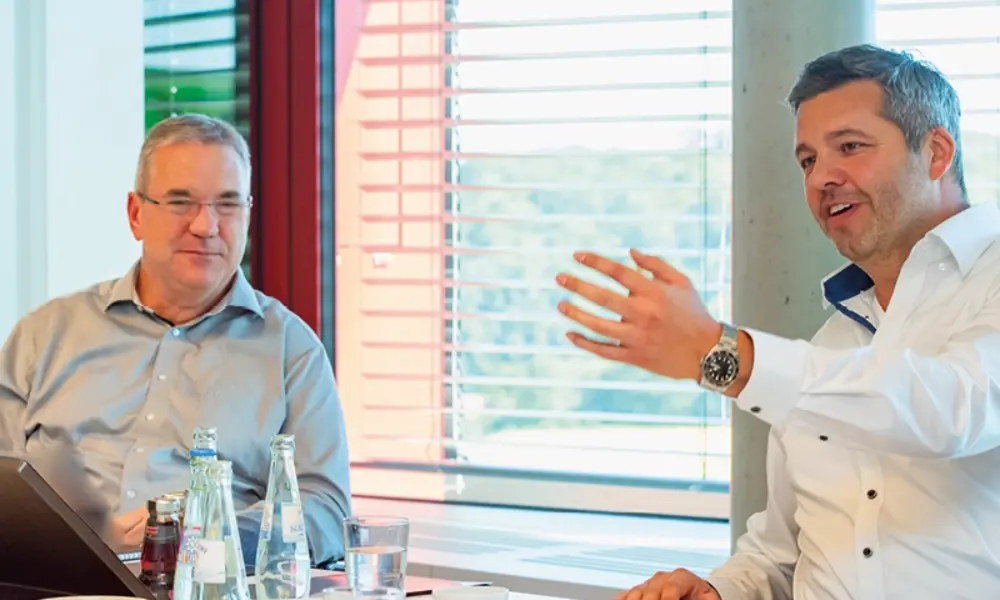
The experts discussed the latest developments and trends in engineering and speculated on the future of the industry.
Muckes: I think the next development stage in mechanical engineering will be one that enables even more cost-effective production and in smaller quantities, i.e. down to batch sizes of 1, but in the same high quality as series production. Digitalisation, networking and new technologies such as additive manufacturing will make this possible. It’s just a question now of making best use of this opportunity.
Eisele: I see a great need for improvements in Germany, as far as the general political framework is concerned – for example, by speeding up the approval process. Many companies have reservations about new developments because of the complications in obtaining the relevant approvals. This must be simplified, but not at the expense of quality. It’s also a fact that more and more production activities will be carried out by machines in future which will boost demand for them. That’s why I see a rosy future for mechanical engineering. It’s important now to consolidate resources, to know what you’re good at, to watch the market and perhaps to be more adventurous. In my opinion, there’s nothing then standing in the way of success.
Ameis: I can only agree with you there. Innovative power has always been the distinguishing feature of mechanical engineering and it will continue to ensure its success in the future too. I am convinced about that.
About the people:
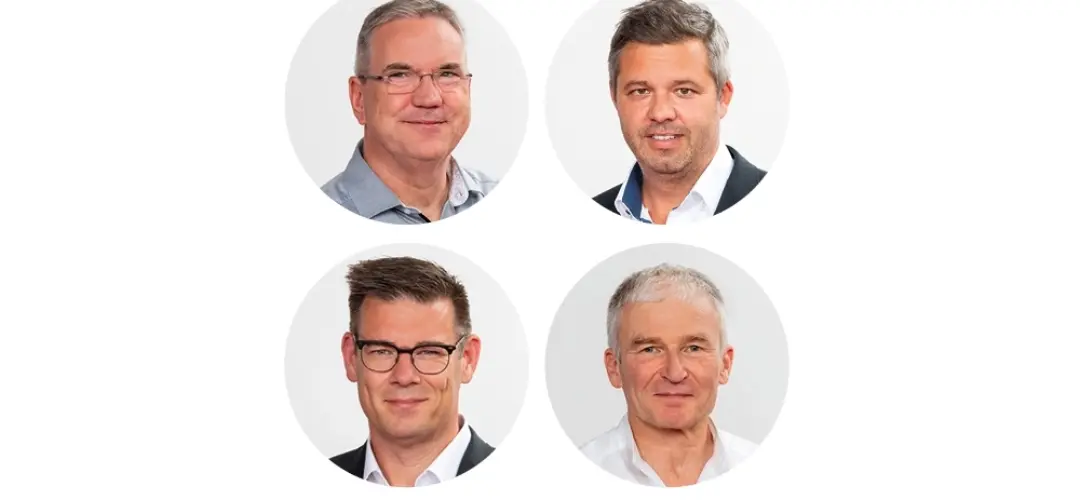
Thomas Ameis joined the HELUKABEL subsidiary EKD Systems as technology manager in October 2022. The graduate mechanical engineer started specialising in energy chains as early on as the mid-1990s and has been able to gather plenty of experience in both sales and engineering from his previous jobs.
Dr. Sebastian Eisele is managing director of Eisele Elektronik GmbH. As a machine construction subcontractor, the company with headquarters in Glatten, Germany focuses on the construction of energy chains, switching cabinets and cable assemblies. One of its key strengths is providing customers with complete systems which save them time, energy money and space.
Andreas Muckes has been working at HELUKABEL since August 2023. As Global Segment Manager Drag Chain Systems, his remit is energy chain systems – a topic in which he has already acquired considerable expertise from previous positions.
Holger Wennrich joined HELUKABEL in 2007 and has held a variety of positions, including subsidiary manager in Italy and China. Since 2019 he is in charge of the expansion of the department for special cables. He is also Global Segment Manager for the specialist area of drag chain cables.
You can also find this and many other exciting articles in the current issue #14 of our customer magazine POWER. Read it now !
